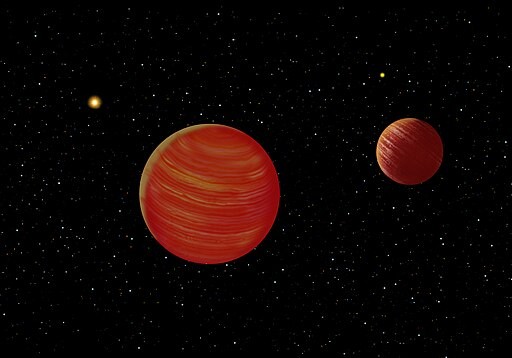A ground-based telescope observed the trembling of a small star located several light years away from the Earth.

(Photo: Wikimedia Commons/ International Gemini Observatory/NOIRLab/NSF/AURA/Lomberg J.)
Record-Breaking Oscillations
At a distance of 11.9 light years, Epsilon Indi is an orange dwarf star with around 71% of the Sun's diameter. Known to be the smallest and coolest dwarf star yet observed, this stellar object was investigated by an international team composed of experts from the Institute of Astrophysics and Space Sciences (IA) in Portugal and researchers from the University of Birmingham.
Led by IA researcher Tiago Campante, the research team studied Epsilon Indi using the ESPRESSO spectrograph located at the Very Large Telescope (VLT) of the European Southern Observatory (ESO). Campante and colleagues used asteroseismology, a technique designed to measure star oscillations. These movements provide indirect information about stellar interiors, just as earthquakes tell us about the Earth's internal structure.
In Epsilon Indi, the peak amplitude of the detected oscillation is just 2.6 centimeters per second, about 14% of the oscillation amplitude of the Sun. This observation is marked as one of the tiniest "starquakes" ever recorded. The details of the study are discussed in the paper "Expanding the frontiers of cool-dwarf asteroseismology with ESPRESSO."
Exploring Stellar Interiors
These measurements made in this study are so precise that the observed speed is even slower than the average speed of a sloth. This level of precision can help scientists settle a long-standing argument concerning the link between the mass and diameter of cool-dwarf stars.
According to IA researcher Margrida Cunha, models of stellar evolution are known to underestimate the diameter of orange dwarf stars by 5-15% compared to the diameter measured from empirical methods. Cunha suggests that studying such oscillations through asteroseismology can help identify the deficiencies of current stellar models.
The detected starquakes can help plan the future PLATO space telescope of the European Space Agency. The oscillation amplitudes measured in this research can be converted to amplitudes in photometry, which PLATO will measure. This information can be a key component in accurately predicting the seismic yield of PLATO, which will be launched in 2026.
Initial skepticism has been expressed about the possibility of detecting such oscillations beyond the reach of the current instrumental capabilities. Still, the researchers believe that aside from detecting the presence of solar-like oscillations in Epsilon Indi, they hope to use the oscillations to study the complex nature of the surface layers in orange dwarf stars.
Since these stars are more relaxed and active than the Sun, they are an important tool in exploring phenomena at their surface layers. These events have not yet been studied in detail in other stars.
Due to their very long lifespans, orange dwarfs and their planetary systems have also recently become the primary focus in the search for habitable planets and extraterrestrial life. As to why they used ESPRESSO, the research team reported that its main goal is to detect and characterize low-mass planets that orbit other stars. Aside from this, it also aims to study the variability of nature's physical constraints.
RELATED ARTICLE: Starquakes Change the Appearance and Brightness of 2 Billion Stellar Bodies
Check out more news and information on Starquakes in Science Times.

![Earth's Quasi-Moon Kamo‘oalewa Could Originate From Lunar Surface Not Asteroid Belt [Study]](https://1721181113.rsc.cdn77.org/data/thumbs/full/53275/89/56/50/40/earths-quasi-moon-kamo-oalewa-could-originate-from-lunar-surface-not-asteroid-belt-study.png)












